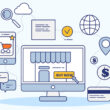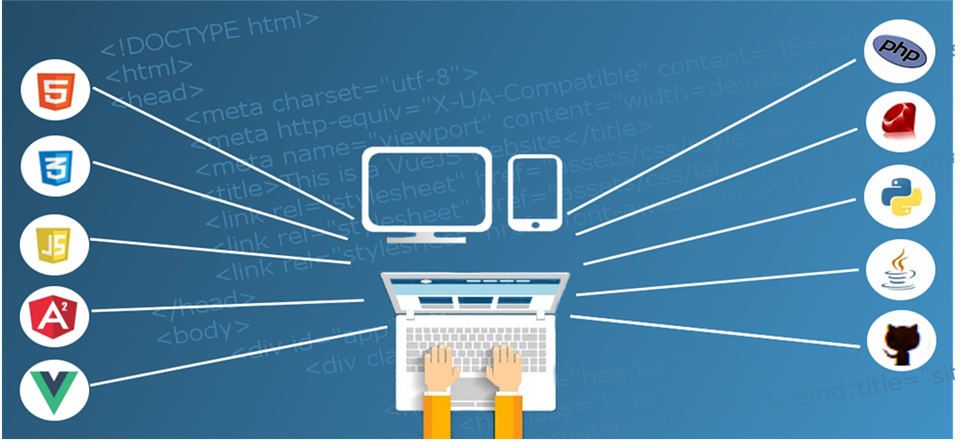Despite some progress, prejudice is still all too common in every aspect of the business. Marketing is no exception, with most companies featuring a fairly non-representative section of consumers with their advertising strategies. So, while most of the past revolutions in the industry have been technological, the next will (hopefully) be cultural. Here, we talk about the benefits of marketing with cultural intelligence and how to close the Marketing Culture Gap.
Procter & Gamble leads by example with a cultural intelligence campaign that shines a light on historically underrepresented groups. Their multi-faceted approach has increased diversity, quashed stereotypes, and provided a blueprint for diversity in marketing. Let’s explore the many benefits of such a marketing approach and how companies can strive for similarly effective cultural intelligence marketing.
The case for diversity in business
P&G’s success is evidence that companies don’t have to choose between profit and progress. The consumer goods giant netted $71 billion in 2020, a 5% increase compared to the previous year.
Industry experts agree: more diverse organizations reap greater rewards. For example, a study involving 1,000 large companies in 15 countries found the most gender-diverse companies up to 48% more likely to outperform the least gender-diverse companies.
In terms of ethnic and cultural diversity, companies in the top quartile are 36% more likely to outperform those in the bottom quartile. Similarly, a Boston Consulting Group study found 19% higher revenues due to innovation in companies with more diverse management teams.
The evidence is clear: there is no reason and no excuse for companies not to do all they can to increase diversity at all levels. Procter & Gamble has many initiatives to move towards this goal which other companies can learn from.
Fighting to gender equality
P&G is striving to attain 50/50 gender representation within the company and its many brands. They are urging others to follow suit by shattering the glass ceiling and advancing talented women to prominent positions, especially at international P&G plants in countries with more male-dominated professional cultures. Their progress over the past several years has been significant: P&G was recognized as the European manufacturer with the highest representation of female executives in 2017.
P&G has also spent $1.1 billion with women-owned businesses while partnering with numerous gender-equality organizations to train women entrepreneurs in 14 countries. Through policy advocacy and educational programs, P&G hopes to topple systemic barriers and pave the way for a gender-equal future.
What’s more, according to a study from the Association of National Advertisers, 40% of women feel inaccurately portrayed by the media. This phenomenon is even worse for professional women who identify with multiple minority identities, such as being a member of the LGBTQ+ community or persons of color.. P&G is combating these biases with its far-flung media reach, producing numerous films and spearheading advertising campaigns to celebrate women and their achievements.
For example, since misconceptions often take root at a young age, P&G partnered with Sesame Workshop to introduce a new muppet. Chamki, a vivacious 5-year-old girl, teaches children about gender equity and various career and family roles independent of stereotypes or limitations.
Bridging the racial divide
P&G endeavors to bridge the racial divide at all levels, with CEO-led programs committed to advancing equality in the workplace and implementing the systemic changes necessary to eliminate racial injustices.
One way to do so is to foster entrepreneurship to break down barriers. Multiple P&G brands and the Local Initiatives Support Coalition (LISC) provided grants for over 4,000 small businesses, – 88% owned by people of color and 57% owned by women of color – hard-hit by COVID-19. And content workshops like Widen the Screen increase visibility for black creators and lend support to nurture and develop diverse talent.
Extending educational opportunities to underserved communities
Olay, a P&G brand, offers scholarships and resources to help close the diversity gaps in STEM fields. Olay aspires to double the number of women in STEM and triple the number of women of color in STEM by the end of the decade. And Secret, another P&G brand, pledged $1 million to provide childcare services and workforce development initiatives for 100,000 women to improve women’s career growth potential.
The past two years also expedited a future trend: the increased reliance on digital education and virtual learning during the pandemic and beyond. To ensure a smoother transition, Take on Race has provided $25 million in funding for One Million Connected Devices, which supplies one million devices to help students of color achieve academic success. Strategies like this can show what a company stands for and build trust in a brand while investing in underserved communities.
Securing representation for LGBTQ+ individuals
P&G also champions equality and inclusion for LGBTQ+ communities, which comprise one of the fastest-growing consumer groups yet are largely neglected by the marketing industry. In collaboration with GLAAD, The Visibility Project provides executives with the knowledge and tools to increase LGBTQ+ representation in their industries.
By highlighting personal stories and challenges, P&G hopes to eliminate intolerance, encourage understanding, and create the human connections necessary to change public perceptions. In 2020, P&G and iHeartRadio hosted Can’t Cancel Pride, a virtual relief benefit that raised $4 million for LGBTQ+ communities which have been disproportionately impacted by the pandemic.
Increasing opportunities and accessibility for individuals with disabilities
P&G has instituted hiring and management programs to increase the inclusion of people with differing abilities. These initiatives include a collaboration with Gallaudet University and Rochester Institute of Technology to recruit talented individuals from the deaf community.
And in-house changes at P&G facilities focus on improving user experiences with more inclusive features, such as audio descriptions, captioning, and speech recognition software. P&G extends this attention to the consumers, too, with revamped, intuitive product designs that boast more accessible packaging and tactile markings for those with visual difficulties. This approach to accessibility shows differently-abled consumers that their needs matter to the company.
Serving the under-resourced
The Children’s Safe Drinking Water (CSDW) Program is a water treatment plant in the form of a small 4-gram packet, which can purify 10 liters of water in just half an hour. Overall, P&G and its partners have contributed more than 18 billion liters of clean water with a goal of 25 billion liters by 2025. This coalition of brands also provides other essential resources for children worldwide, including shelter, schooling, playgrounds, and medical care.
The company has also taken action in the face of natural disasters. In 2020, P&G and Foodbank also distributed more than 100,000 products following the Australian wildfires. After Cyclone Amphan ravaged West Bengal, Whisper donated more than 100,000 sanitary pads. And during the pandemic, more than 50 P&G brands joined forces to donate tens of millions of dollars, as well as supplies, protective equipment, and countless hours to accelerate recovery.
Developing sustainable practices
Through reformulated products like dry shampoos and more efficient cleaning supplies, P&G’s Earth-conscious new line of consumer goods promises to reduce household water use by hundreds of gallons per year. P&G also set itself some lofty industrial goals to be met by 2030: achieving a neutral carbon footprint, promoting reforestation efforts, and improving crop yields for farmers.
There is something to be said for harnessing technology to the benefit of businesses and the environment, and P&G is aiming to do just that. By 2030, P&G aims to utilize 100% recyclable packaging, 100% renewable electricity, circular water management, and an enhanced waste product economy. Sustainability is becoming a significant focus for many consumers and investors, so companies would do well to highlight their sustainability goals as part of their marketing strategies.
Reaching a global audience
P&G’s various campaigns highlight the merits of engaging a diverse, global audience through social media and digital marketing. Recent virtual movements such as #SomeoneLikeMe allows P&G employees to share accomplishments, praise mentors, and tell personal stories which remind us that we’re all unique but equal.
The influence of virtual campaigns proves that all companies can make an impact via culturally intelligent marketing. The wide reach of the internet allows businesses and individuals alike to join the fight for equality by promoting an inclusive public image. Through social media and by creating a strong website, businesses can easily highlight their values thanks to a wealth of easy-to-use site-building tools.
According to online marketer Gary Stevens of Hosting Canada, it’s much simpler to make your websites look visually appealing thanks to the numerous easy-to-use building tools that are now available.
“A website builder interface is a what you see is what you get experience,” says Stevens. “That means that as you drag-and-drop elements around on the screen you see a representation of your website.” Since your website is a reflection of your brand’s values, this is an important investment for companies seeking to employ inclusive marketing practices.
Conclusion
The intrinsic, humanitarian value of cultural intelligence is difficult to measure, but you know when it’s missing from a company’s ethos. Diversity and inclusion, however, have been proven time and time again to benefit companies across industries. So it’s no coincidence that organizations that champion diversity as a pillar of marketing find themselves at the forefront of the industry—innovatively and financially.










